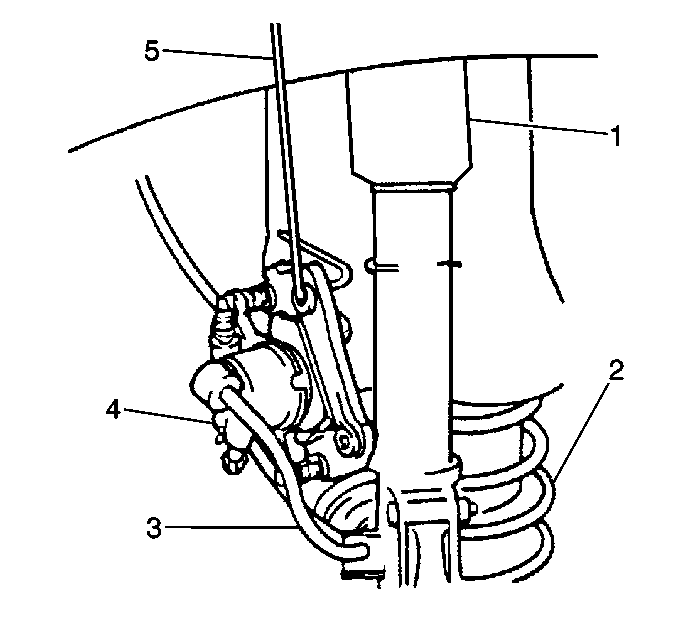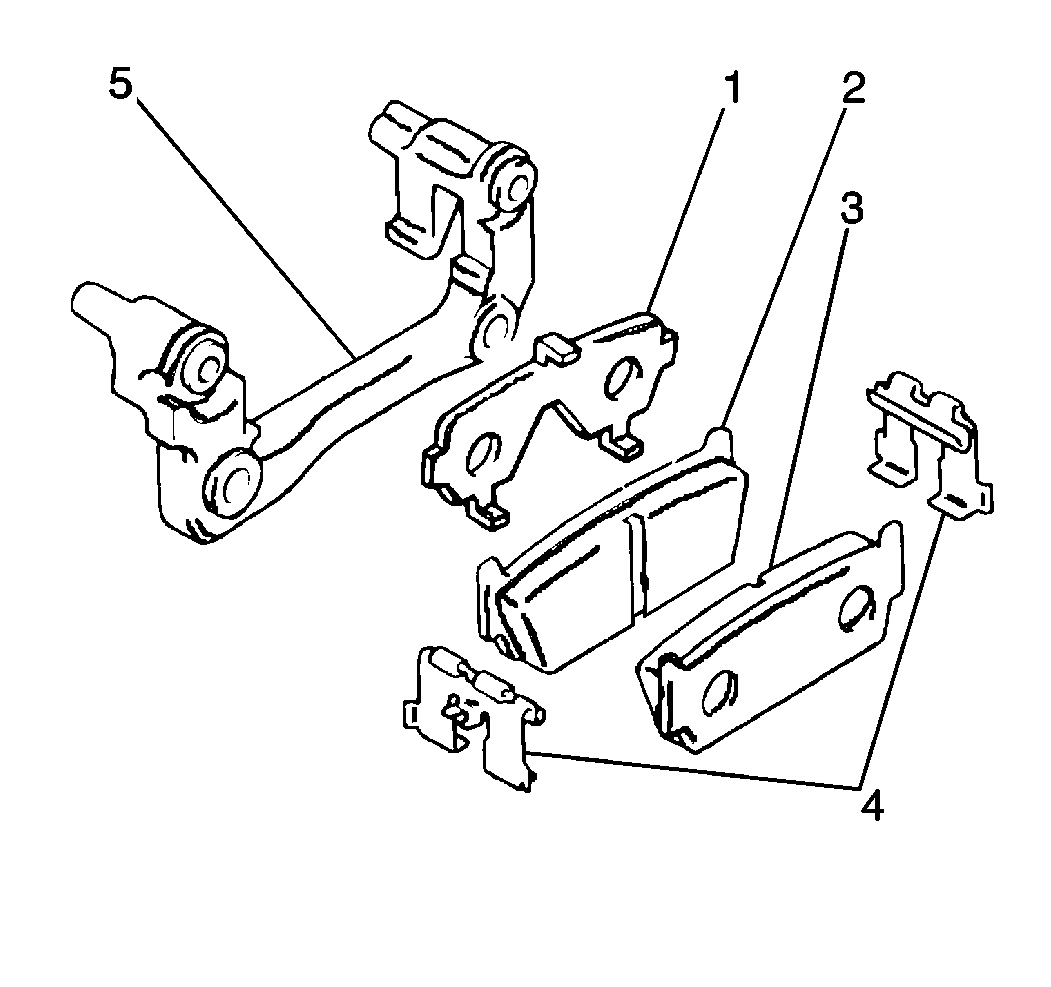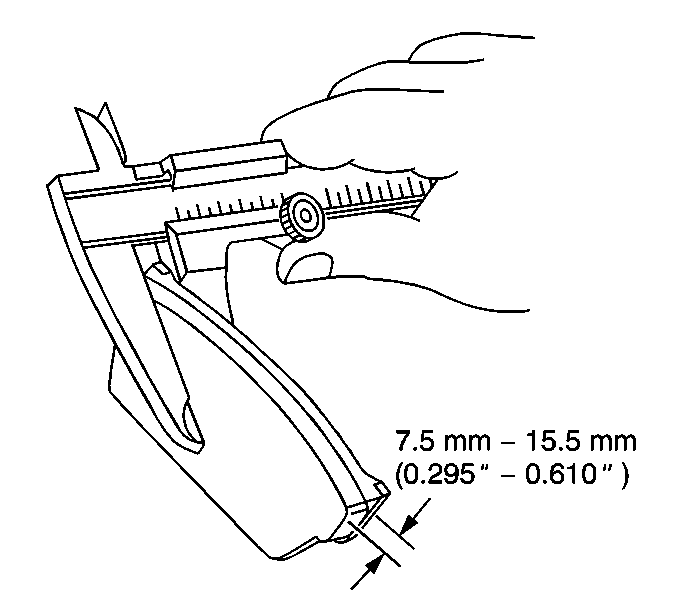Removal Procedure
Caution: Avoid taking the following actions when you service wheel brake parts:
• Do not grind brake linings. • Do not sand brake linings. • Do not clean wheel brake parts with a dry brush or with compressed air.
- Remove two-thirds of the brake fluid from the master cylinder reservoir using a siphon.
- Raise and support the vehicle. Refer to Lifting and Jacking the Vehicle in General Information.
- Remove the tire and wheel assembly. Refer to Tire and Wheel Removal and Installation in Tires and Wheels.
- Remove the 2 caliper pin bolts (2).
- Remove the caliper assembly (4) from the caliper bracket. Suspend the caliper assembly with wire in order to prevent damage to the brake hose.
- Remove the 2 brake pads (2, 3) from the caliper bracket (5).
- Remove the 2 brake pad retainers (4).
- Remove the 2 brake pad insulators (1).

Notice: Do not allow the brake components to hang from the flexible brake hoses. Damage to the brake hoses could result.


Inspection Procedure
- Measure the brake pads.
- If the thickness of the pad and the plate is less than the minimum specification, replace the pads.

Specification
The minimum thickness of the pad and the plate is 7.5 mm (0.295 in).
Installation Procedure
- Install the 2 brake pad insulators (1) to the brake pads (3,4).
- Install the 2 brake pad retainers (4).
- Install the 2 brake pads to the caliper bracket (5).
- Install the caliper (1) to the caliper bracket. Install the 2 caliper pin bolts.
- Install the tire and wheel assembly. Refer to Tire and Wheel Removal and Installation in Tires and Wheels.
- Lower the vehicle.
- Fill the master cylinder reservoir. Refer to Master Cylinder Reservoir Filling in Hydraulic Brakes.
- Start the engine.
- Press the brake pedal several times in order to position the caliper piston.
- Burnish the pads. Refer to Brake Pad and Rotor Burnishing .

Important: Install the brake pad with the wear indicator to the inner pad position.
Notice: Use the correct fastener in the correct location. Replacement fasteners must be the correct part number for that application. Fasteners requiring replacement or fasteners requiring the use of thread locking compound or sealant are identified in the service procedure. Do not use paints, lubricants, or corrosion inhibitors on fasteners or fastener joint surfaces unless specified. These coatings affect fastener torque and joint clamping force and may damage the fastener. Use the correct tightening sequence and specifications when installing fasteners in order to avoid damage to parts and systems.
Important: Verify the boots fit into the grooves securely.

Tighten
Tighten the caliper pin bolts to 27 N·m (20 lb ft).
